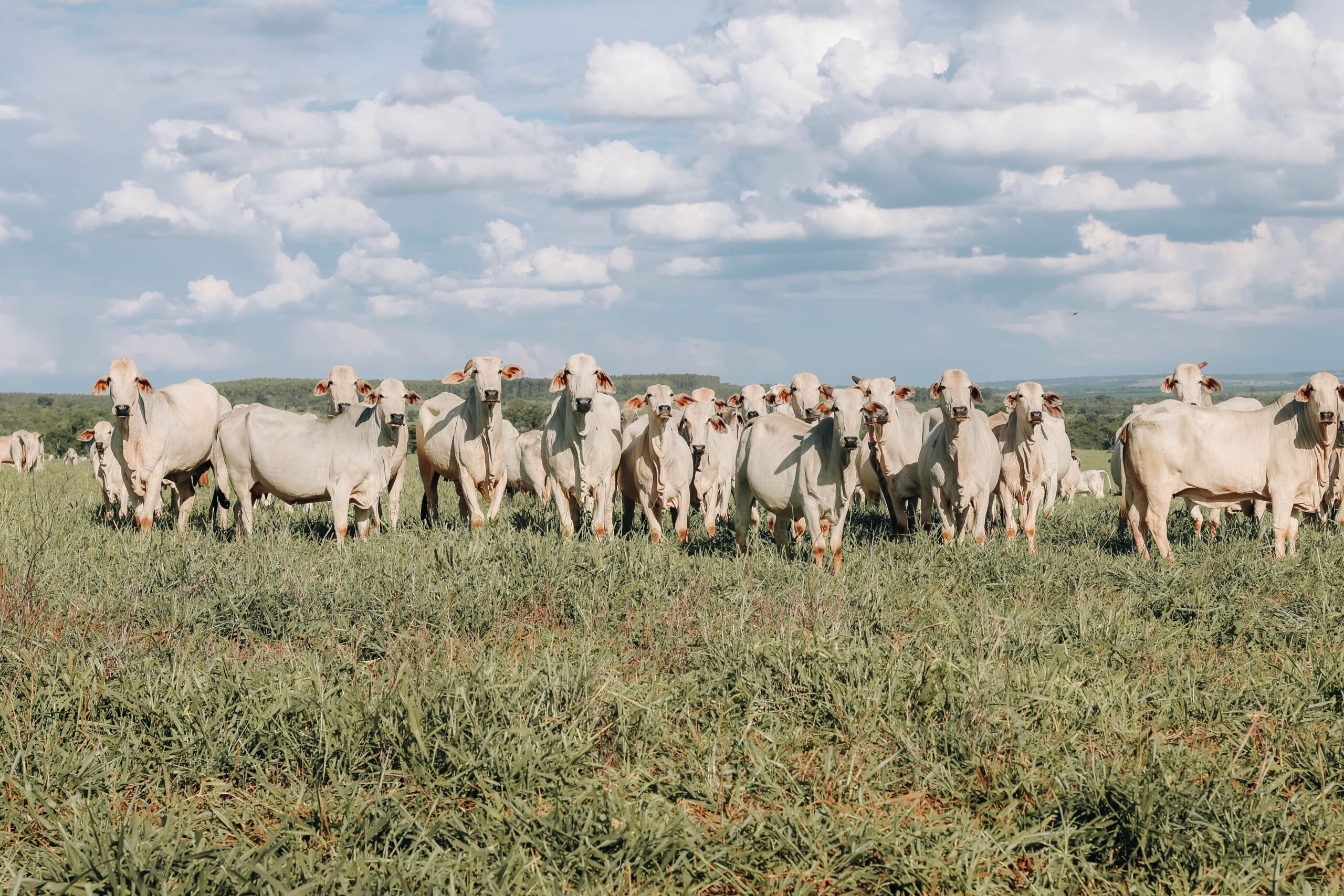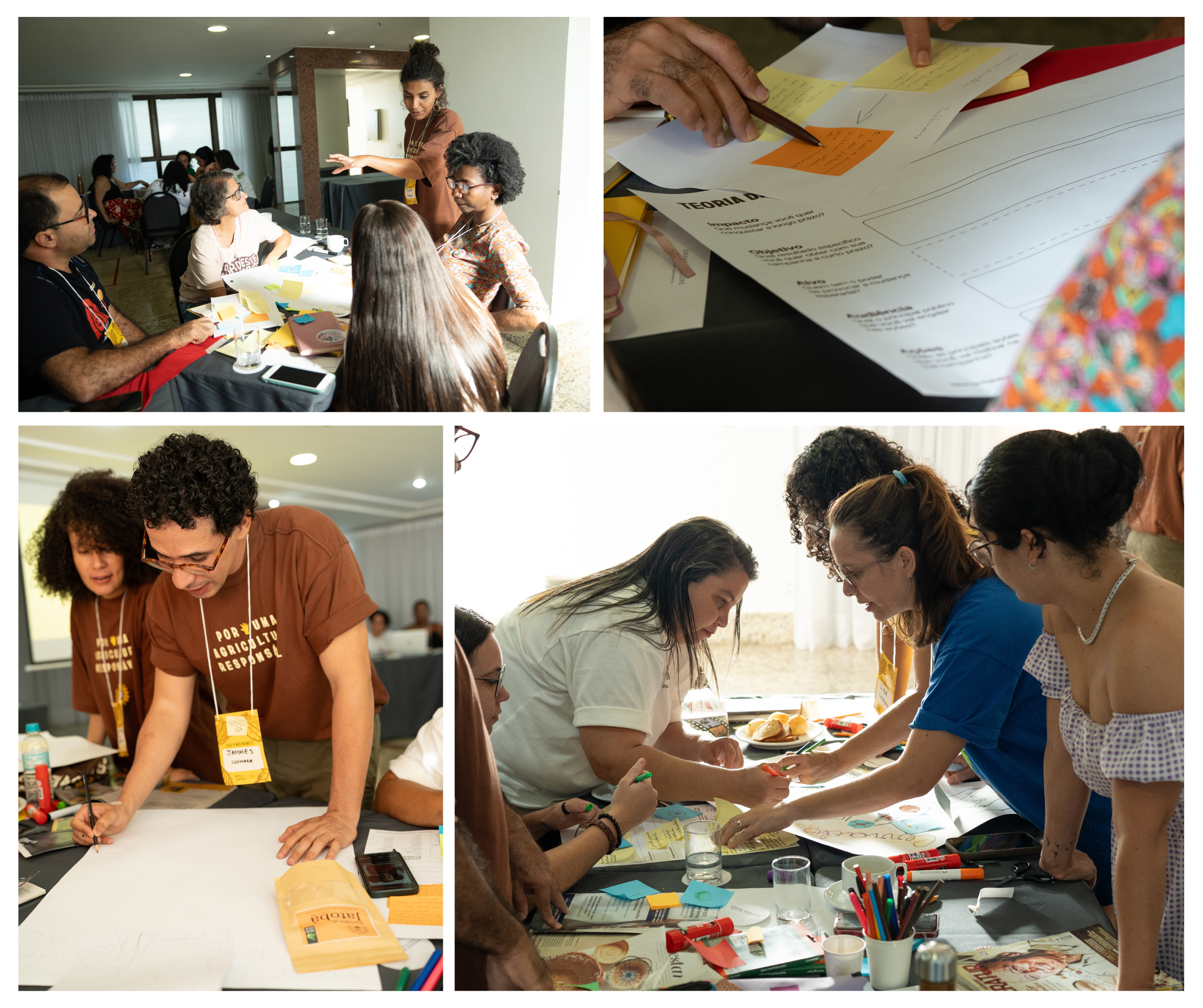Defending the Cerrado
Supporting Climate Action in Brazil’s Most Endangered Biome
Flavia Mesquita, Campaigns Associate Manager, Brazil · 4 Minute Read Time
The Cerrado is the second largest biome in South America and the oldest biome in Brazil, known as the “heart of waters” because it is home to the headwaters of the continent’s main river basins. The waters that spring from the Cerrado feed into the rivers of the Amazon, sustain the Pantanal wetlands, irrigate the semi-arid Caatinga, and supply the Atlantic Forest and southern regions of the country. Protecting the Cerrado is essential for Brazil’s water and climate security and to ensure the survival and balance of other biomes that depend on it.
When we talk about the Cerrado, we cannot limit our perspective to its ecological importance and the water resources it harbors. It is also essential to recognize the immense cultural richness and the diversity of knowledge of the peoples who have lived in this territory for generations. These include Quilombola communities, Indigenous peoples, and traditional groups such as the quebradeiras de coco-babaçu (babassu coconut breakers, women from traditionally extractive communities in northern and northeastern Brazil). These peoples not only inhabit the biome: they protect it, cultivate ancestral knowledge, and firmly resist the pressures that threaten their land and identity.
If agriculture and livestock farming continue to advance at the current pace, the Cerrado could lose up to 33.9% of the volume of water flowing into its rivers by 2050
In 2024, Brazil’s National Institute for Space Research (INPE) reported a drop in deforestation: 30.6% in the Amazon and 25.7% in the Cerrado. Nevertheless, deforestation in the Cerrado remains at alarming levels, with about 700,000 hectares destroyed — nearly double the area devastated in the Amazon during the same time period. The most intense devastation is happening in the MATOPIBA region, which spans across the states of Maranhão, Tocantins, Piauí, and Bahia and is considered the new frontier of agribusiness expansion in Brazil. This area faces intense deforestation and exploitation of natural resources, causing severe environmental and social impacts, especially for the traditional communities that live in this biome.

Despite its fundamental ecological role, especially in sustaining the Amazonian river basins, the Cerrado receives far less public attention, political support, and engagement from civil society.
Local organizations working to protect the Cerrado biome, advocate for its socio-biodiversity, and promote sustainable food production are faced with significant challenges, such as limited access to resources, low political influence, and little participation in major climate and public policy forums. If Cerrado-based organizations are not empowered to take part in major climate discussions, there will be no in-depth, earnest conversation about the Cerrado.
The solution lies with those who live in the biome and fight to protect it
Purpose has solid experience developing solutions to support capacity-building and strengthen civil society movements and organizations. One such example is IARA—Innovation and Acceleration in the Amazon Region, an initiative focused on organizations in the Amazon region that has had so far three successful iterations and supported over 30 leaders and collectives. This initiative promotes training in engagement and mobilization campaigns, knowledge exchange, and strategic support for those who are on the frontlines defending territories, socio-biodiversity, and climate justice.
To address the challenges facing the Cerrado, Purpose has adapted its capacity-building methodology developed for Amazon-based organizations to meet the needs of Cerrado organizations. We created the Cerrativista Campaign Accelerator within the Mãos da Transição movement—an initiative that seeks to accelerate the transition in food systems.
Building capacity across six Cerrado-based organizations
In partnership with the Institute for Society, Population, and Nature (Instituto Sociedade, População e Natureza—ISPN), we opened a call for applications and selected six organizations working on food system issues from different areas across the Cerrado: Coomara (MA), Núcleo do Pequi (MG), CPT Oeste da Bahia (BA), CMTR-MA, EFA Veredinha (MG), and EFA Rio Peixe (MA).
The participating organizations received financial support throughout the project to boost their projects and strengthen their institutional positioning. They also attended workshops and received expert advice focused on enhancing their capacities in strategic areas, with the goal of boosting and expanding the impact of their actions.
The topics covered included:
|
|
During these workshops and consulting sessions, we shared methodologies and tools and explored strategies to develop powerful campaigns and narratives capable of raising awareness and mobilizing support for the preservation and appreciation of the Cerrado. Together, we also co-created a map of narratives and counter-narratives about the biome, which will serve as a strategic foundation to strengthen the organizations’ future campaigns.

Political advocacy and visits to decision-makers in Brasília
One of the highlights of the Accelerator was an in-person immersion in Brasília. During three intense days, we deepened our knowledge, exchanged experiences, and collectively reflected on the challenges and opportunities around the efforts to keep the Cerrado alive. The organizations attended workshops on food systems, campaign strategies, building narratives, and political advocacy.
We dedicated a special day to strengthening the organizations’ political capacity for political action. In a workshop on Decision-Makers, we delved into how to influence public policymaking and strategically shape discussions in decision-making spaces. Participants had the opportunity to put what they had learned into practice during visits to offices of the executive and legislative branches of the Brazilian government.
At the Ministry of Agrarian Development, we were welcomed by Sandra Kennedy, Head of the Social Participation and Diversity Office, and Joelma Melo, Coordinator of Ecological Transition. At the National Congress, we had an appointment with Gabriel Miranda, parliamentary advisor to Congresswoman Dandara Tonantzin, who leads the Working Group on the Protection of the Cerrado.
The organizations presented their demands and challenges for protecting the socio-biodiversity of the Cerrado, highlighting, among other points, the need to include native fruits like pequi and baru in the National Supply Company (CONAB) procurement list.
“We tend to think that these people are unapproachable, that we don’t have a voice to reach out to them. But I realized that that’s not true—they are genuinely interested in what we have to say because their work is shaped by our realities and by what we do.”
– Leader who took part in the program
Impact and lessons learned
These organizations combined directly reach around 6,000 people through their projects and ongoing actions. With the financial support received during the Accelerator program, they were able to expand their presence on the ground, mobilizing communities and sharing the lessons they had learned. As a result, they held events, workshops, and community conversation circles, reaching over 2,000 new people during the program.
The six participating organizations demonstrated significant progress in their ability to plan and execute campaigns. They developed skills in areas such as goal-setting, creative tactics, audience prioritization, narrative development, and the production of communication materials. In addition, they all reported an unexpected impact: a greater capacity to spread the lessons they learned within their local community networks, creating sustainable cycles of learning.
Pequi and Baru were included in the CONAB procurement list, and all organizations were invited to join the Cerrado Working Group led by Congresswoman Dandara Tonantzin.
Even though this was a pilot project, we identified great opportunities to act and contribute solutions to the challenges faced in the Cerrado, and we achieved significant immediate results. However, we know that, to keep the Cerrado de Pé—the Cerrado standing—, we need to further collectivize efforts and continue to expand our support to local organizations.